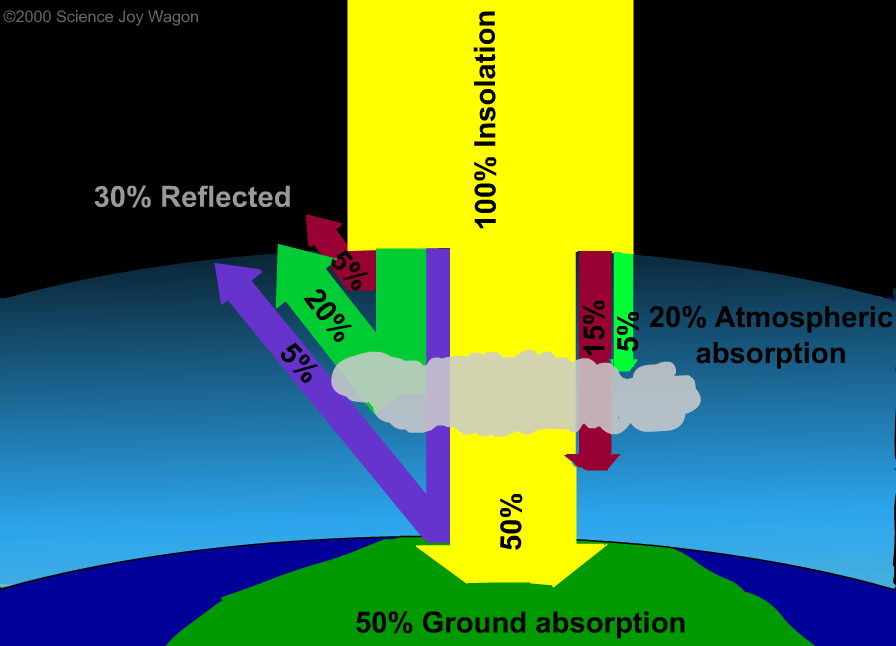
Of all the insolation striking the Earth, only 50% reaches the ground or water. 30% gets reflected or scattered back into space and the remaining 20% gets absorbed in the atmosphere. The high energy radiation like X-rays, gamma-rays, and much of the ultra-violet (UV) gets absorbed by the ozone and other gasses in the upper atmosphere. The longer wavelength rays like infra-red (heat) are mainly absorbed by water vapor and carbon dioxide in the atmosphere. The majority of the light that actually strikes the Earth's surface is visible light.
Absorbed light contributes to a temperature
change while any reflected light does not. The color or structure of the
surface the light strikes determines reflection or absorption. In general,
light colors tend to reflect more and darker colors tend to absorb more.  For example, black asphalt tends to absorb more rays than green grass.
As seen in the the diagram to the left, water tends to absorb more as the rays
come in from directly overhead but it tends to become more reflective as the
light strikes it at smaller angles. At very shallow angles it becomes
almost totally reflective.
For example, black asphalt tends to absorb more rays than green grass.
As seen in the the diagram to the left, water tends to absorb more as the rays
come in from directly overhead but it tends to become more reflective as the
light strikes it at smaller angles. At very shallow angles it becomes
almost totally reflective.
It should also be pointed out that some substances have different specific heats which means they convert the same amount of energy to different changes in temperature. For example, A given amount of energy may increase the temperature of a kilogram of rock by 10° where the same amount of energy may only raise the temperature of a kilogram of water by only 2°. This explains why water tends to warm up slower than the land and why it also cools down slower. Also contributing to the slow change in temperature of the water is that the heat energy travels deeper and is further distributed by convection currents in the water. This means the entire body of water warms where the warming of the ground is limited to the first few meters of depth with most of the heat being found in the first few centimeters. This heat is as quickly lost as it is gained.
